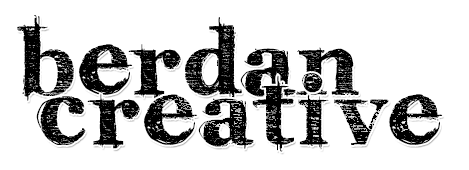2015 Arts Reach Conference
With the opportunity to hear from the likes of the National Ballet of Canada, Shaw Festival, Hot Docs, Massey Hall and Roy Thomson Hall, Canadian Stage, and the National Arts Centre, I was no less excited for this year’s Arts Reach conference than I was for my first visit last year. As a special bonus this year, I got to host a Lunch with the Experts table, where I met people from orchestras, theatres, and museums… oh my! We talked storytelling in the digital space, and I learned at least as much from the folks at my table as I had to offer them.
Innovation—thinking and doing differently—was a common theme throughout the conference from the opening keynote onward.
1st #artsreach session in TO. Learned about "small experiments w/radical intent". Sounds like fun!
— Horizon Stage (@horizonstage) May 19, 2015
https://platform.twitter.com/widgets.js
We talk innovation culture all the time—from Google’s 20% Time to Valve’s flat organization and other perks. It’s how you stay at the top of your game, and it’s no less important in the arts, even for organizations that embrace the classics and serve a more conservative audience. The National Ballet of Canada’s Executive Director, Barry Hughson, kicked off the conference with a review of how he shook things up when he joined the company. Hughson and the company foster openness and idea sharing with Innovation Fridays and regular development meetings where the ideas fly after the requisite 15 minutes of business are out of the way. Most importantly, Hughson talked about not only hearing new ideas, but doing something with them, like starting In Studio and introducing the world to the Toronto stage on World Ballet Day.
The National Ballet of Canada wasn’t the only group shaking things up. Massey Hall and Roy Thomson Hall are using data to change the who-and-how of their funding campaigns (with the help of KCI Ketchum Canada), and building a more comprehensive media mix that better incorporates digital tactics (with MogoARTS Marketing).
The National Arts Centre (NAC) needed to engage a younger audience, so they made deliberate decisions to reach that goal, from bringing in a young director to asking for input from younger patrons… and using that input to make changes like focusing on single ticket sales and offering a more social atmosphere before and after the show. To unveil their new programming, the NAC researched the top influencers among the people they wanted to attract, and sent in-person invitations that included a bottle of wine and a quartet from the NAC itself—my new life goal is to achieve that level of influence someday. Oh, and they also decided to completely overhaul their brand to show that Canada is our stage.
@shannonurie Described how the NAC has rebranded with concrete examples I will put to work. First step: brand statement. #artsreach
— Kendra Lee (@agirlwho_reads) May 19, 2015
https://platform.twitter.com/widgets.js
The rebranding story by @CanadasNAC shows just how long the process can take when you do it well. #artsreach
— 🌎 KarenSD 🌎 (@karensd) May 19, 2015
https://platform.twitter.com/widgets.js
A subtheme of the innovation discussion was, of course, the digital, from the big-bad-world of Canada’s anti-spam legislation (CASL) to Stratford Festival Reviews’ Keith Tomasek’s fantastic overview of tips and tricks for spreading your story far and wide through social media, to AudienceView’s selfie campaign to raise money for Kids Up Front.
I came away with a lot of ideas, some great connections… and a question that came from a panel discussion about sponsorship. The panel was both fascinating and refreshing. It was interesting to hear about how different the sponsorship discussion is between larger and smaller groups (not surprising), and even between larger sponsorship groups that are organized differently (much more surprising). What doesn’t differ across the board is the need to tell an authentic story that lets sponsors be heroes and feel like they are actually part of something; the ad and the logo placement are ultimately just asides. And that’s where it got interesting… now that digital is in the mix, it may be a small part of a sponsorship package, but the consensus was not to offer social as a benefit from the arts organization’s (already small) marketing team, which made me wonder how arts organizations and sponsors might work together to find the benefit of social in a sponsorship relationship.
Surprised to hear there’s not a lot of integration of soc/dig metrics/goals w/ corporate sponsorship. Beneficial both ways #artsreach
— 🌎 KarenSD 🌎 (@karensd) May 19, 2015
https://platform.twitter.com/widgets.js
Have you seen any examples of great business-arts partnerships, either in ads or the digital space? Any inspiring innovation stories in the arts world?

